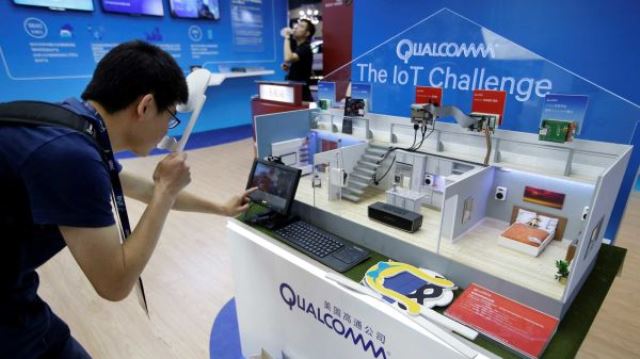Anritsu Corporation announced that Anritsu MT8000A supports performance validation of Qualcomm Snapdragon 5G modem-RF systems.
 Anritsu’s MT8000A Radio Communication Test Station assisted Qualcomm to verify the performance of key 5G features, such as Dynamic Spectrum Sharing (DSS) in the FR1 FDD mode, in the Snapdragon X55 5G Modem-RF System.
Anritsu’s MT8000A Radio Communication Test Station assisted Qualcomm to verify the performance of key 5G features, such as Dynamic Spectrum Sharing (DSS) in the FR1 FDD mode, in the Snapdragon X55 5G Modem-RF System.
Anritsu’s collaboration with Qualcomm Technologies is focused on testing of key features required by 5G non-standalone (NSA) services, which have been introduced in several parts of the world in 2019 and 5G standalone (SA) services will be deployed globally starting in 2020.
Using DSS, a key technology for allocating the resources of a single frequency band to LTE and 5G according to demand, with a mixture of 5G and LTE terminal users, helps provide LTE users with continued good communications while offering 5G users advanced services over the same frequency band.
DSS also allows the operator to rapidly deploy 5G services in bands currently used by LTE without having to wait for frequency re-farming.
The MT8000A can also test several other advanced 5G features included in the Snapdragon X55 5G Modem-RF System, such as Massive MIMO and Service Data Adaptation Protocol (SDAP), the 5G core network slicing technology.
“We were able to accelerate the verification of 5G technology in our solutions by adoption of Anritsu’s test platform,” Jon Detra, vice president of Engineering at Qualcomm Technologies, said.
Qualcomm uses the MT8000A test platform for RF, Protocol, and Beam tests, as well as for beam-forming evaluations. It supports functions for simulating base station NSA and SA modes required for development of 5G chipsets and terminals.
The 5G testing solution supports the latest technologies, such as 4×4 MIMO, for increasing data transmission speeds in the Sub-6 GHz band, as well as 8CC for implementing wideband mmWave.
It covers the frequency bands such as the Sub-6 GHz band (FR1) frequencies of 600 MHz, 2.5 GHz, 3.5 GHz, 4.5 GHz, etc., and the mmWave band (FR2) frequencies of 28 GHz, 39 GHz, etc.





